Were Creek Indians from West Mexico?
Circular Pyramids
A mound constructed at the Lamar Mounds site in Macon, Georgia near the Ocmulgee Mounds site was a circular pyramid accessed by a spiral ramp. It is the only such structure known to have existed in the eastern United States. Circular stepped pyramids were also a feature of the Teuchitlan Tradition in the western Mexican state of Jalisco. The latest research shows these circular pyramids were built at the same time as the shaft tombs and were part of the same cultural tradition.[xiii] Circular pyramids in Mexico were usually associated with Quetzalcoatl, the Featherd Serpent deity, in his guise as Ehecatl-Quetzalcoatl, a wind god.[xiv]
Although the Teuchitlan circular pyramids were step-pyramids lacking a circular ramp and the layout of the two sites was also different, it does reveal that at least the “idea” of a circular pyramid existed in western Mexico and could have migrated along with the other ideas and evolved into its own unique expression as seen at the Lamar site.
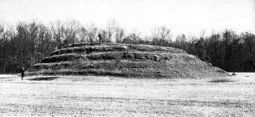 |
| The spiral mound at the Lamar Mounds site near Ocmulgee. Notice the man standing on top of the structure and the one on the ground to the left. |
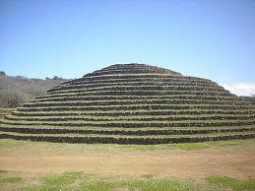 |
| Circular pyramid from Teuchitlan Tradition in Jalisco, Mexico. |
An Olmec Connection?
A little further south in the western Mexican state of Guerrero other artifacts were found that also have a correlation with artifacts found in the Etowah Mounds site in Georgia. A stone sculpture or stela believed carved by Olmecs after 900 BC was found in San Miguel Amuco, Guerrero.[xv] It depicts a man wearing a bird mask similar to the Bird Man copper breast plate found in the funeral mound at Etowah Mounds. Protruding from the head of the Olmec bird man is a three-pronged design similar to the design of ceremonial maces found at Mississippian sites throughout the southeast.
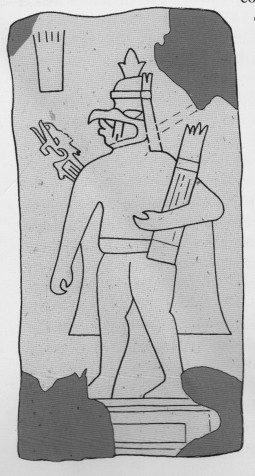 |
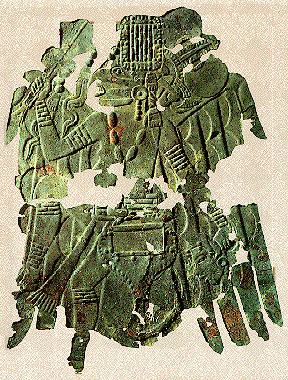 |
| Olmec stone sculpture showing man wearing bird mask with a three-pronged ceremonial mace design on his head | Copper breast plate from Etowah Mounds, Georgia depicting a man wearing a bird mask, holding a three-pronged ceremonial mace with a rectangular symbol on his waist pouch. |
One such ceremonial mace can be seen in the same Bird Man breastplate from Etowah though it has somewhat more rounded edges than the Olmec design. A nearly identical design can be found at Spiro Mounds. A three-pronged mace closer to the Olmec stela design can be found on a shell gorget which depicts a warrior with a forked-eye motif holding a severed head in one hand and the three-pronged ceremonial mace in the other hand.
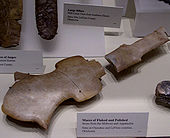 |
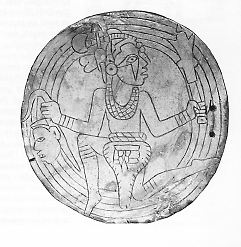 |
| Three-pronged ceremonial mace from Spiro Mounds in Oklahoma that is identical to the one on the Etowah bird man copper breast plate. | Mississippian shell gorget depicting warrior with forked-eye motif holding a three-pronged ceremonial mace |
Interestingly, the Olmec also depicted themselves wearing a forked-eye motif in some of their ceramics. They also showed themselves wearing a rectangular breastplate very similar in design to the rectangular motif on the bellows-shaped pouch hanging from the waist on the Etowah Bird Man copper plate which may represent a clan symbol.
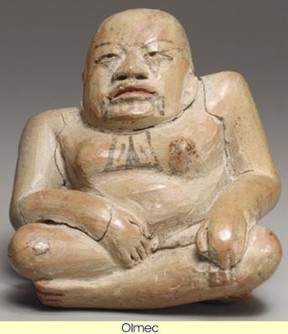 |
 |
| Olmec ceramic showing forked-eye motif | Rectangular breastplate on Olmec statue from El Azuzul |
The Olmec were also known for creating sculptures and masks featuring a distinctive cleft head. This same feature can be seen on Mississippian Long-Nosed God masks throughout the eastern United States.
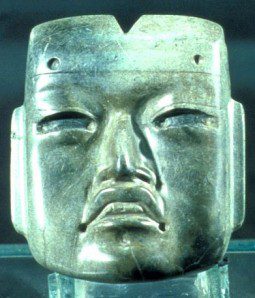 |
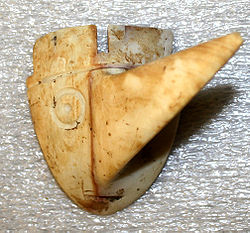 |
||
| Olmec mask with cleft head | Long-nosed God mask with cleft head | ||
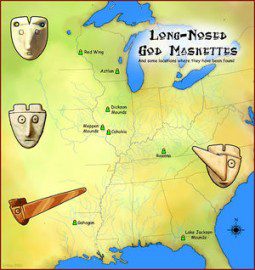 |
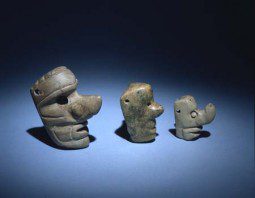 |
||
| Map showing distribution and variety of Long-Nosed God masks with cleft heads. | Variety of long-nosed God stone pendants from Guatemala | ||
It should also be noted that the Long-Nosed God is a deity shared by many cultures throughout Mesoamerica and probably originates with the Olmec. Of course, the Olmec are also the originators of the “feathered serpent” deity that can also be found throughout eastern North America.

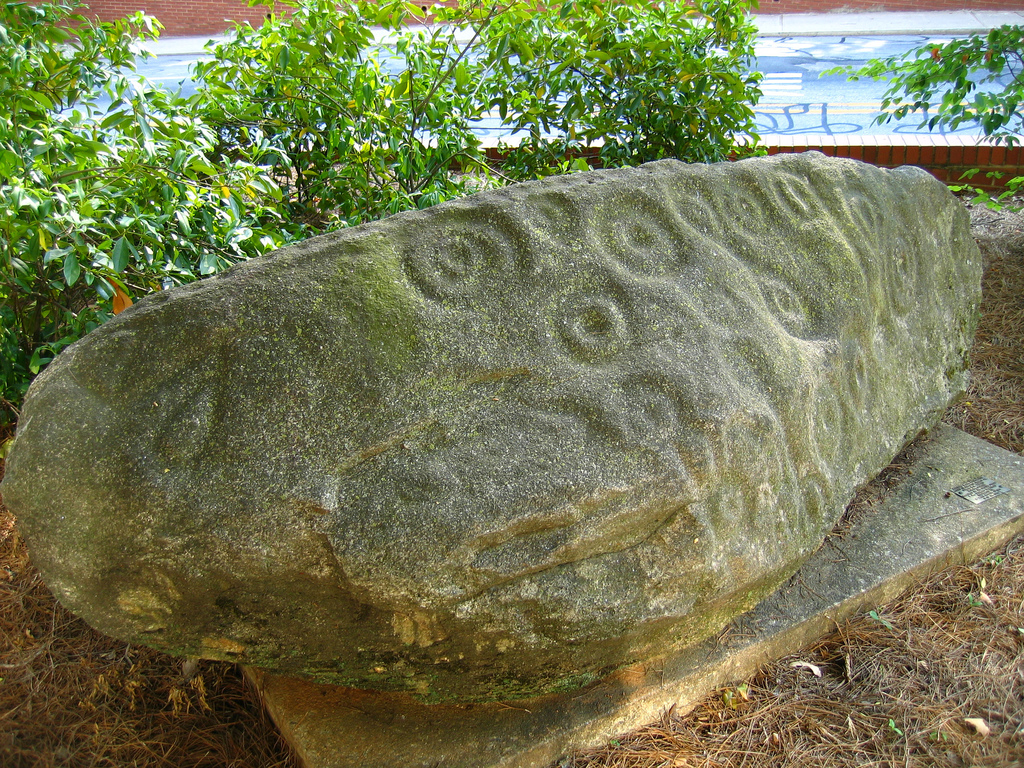
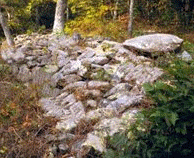
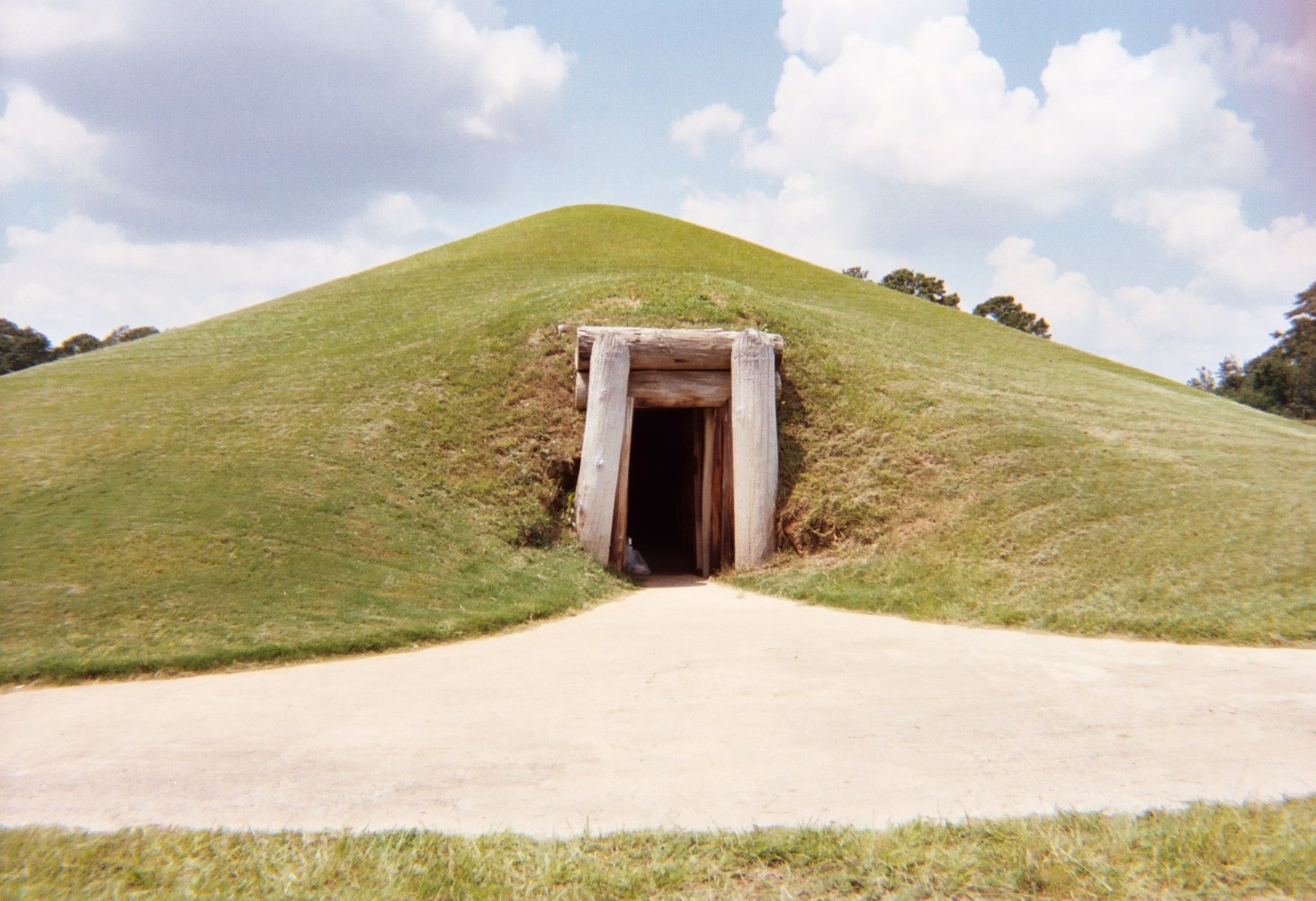
Very fascinating discourse! Results from my STR ancestry DNA calculator confirm the Mexico/southeast U.S. migration with the the Cora people of Nayarit being directly related to the Creek Indians of Georgia.